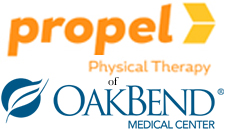Adhesive capsulitis, commonly referred to as Frozen Shoulder, is a debilitating condition of the shoulder, marked by pain and progressive loss of motion. The shoulder joint is surrounded by a fibrous joint capsule, which in this condition, becomes inflamed and thickened, forming adhesions.
This condition is most prevalent in women from 40-60 years old, typically with no known cause, just a gradual loss of motion and increasing pain. A thorough history may reveal a rather insignificant act that precipitated this condition, something as simple as feeling a slight discomfort when taking down a box of Christmas ornaments. Periods of immobilization, such as using a sling after surgery, can also trigger a frozen shoulder. Xray and MRI imaging will usually be unremarkable, but arthroscopic evaluation will show a thickened, inflamed joint capsule. Studies have shown risk factors to include Diabetes and thyroid issues; prevalence in diabetics is 10-20% and thyroid (hyper- or hypo-) is 10-17.4%(http://www.ncbi.nlm.nih.gov/pubmed/12864792).
Adhesive capsulitis is a process that can last for 12-24 months. It typically goes through 3 phases: freezing, frozen, and thawing.
(1) Freezing stage: characterized by pain and progressive loss of motion; sleep is often disturbed in this stage.
(2) Frozen stage: pain will usually lessen considerably and there is no significant change in motion.
(3) Thawing stage: motion will begin to return and the ability to use the affected arm will improve.
So, what can be done? After seeing your physician and possibly receiving a cortisone injection, physical therapy is usually the next step. At your first visit, we will assess your range of motion and the mobility of the joints of the shoulder complex. Because of the inflammatory nature of this condition, aggressive stretching is NOT beneficial, as it only irritates an already irritated joint.
At Propel, we utilize joint mobilizations and gentle movements to decrease pain and improve motion. Dry needling, cupping, and taping techniques can also be used to help decrease muscular pain associated with this condition. We will provide a home exercise program consisting of various stretches to be performed several times per day; in my opinion, short bouts of frequent stretches throughout the day tend to be more beneficial than 2 30-min sessions/day.


Leave A Comment
You must be logged in to post a comment.